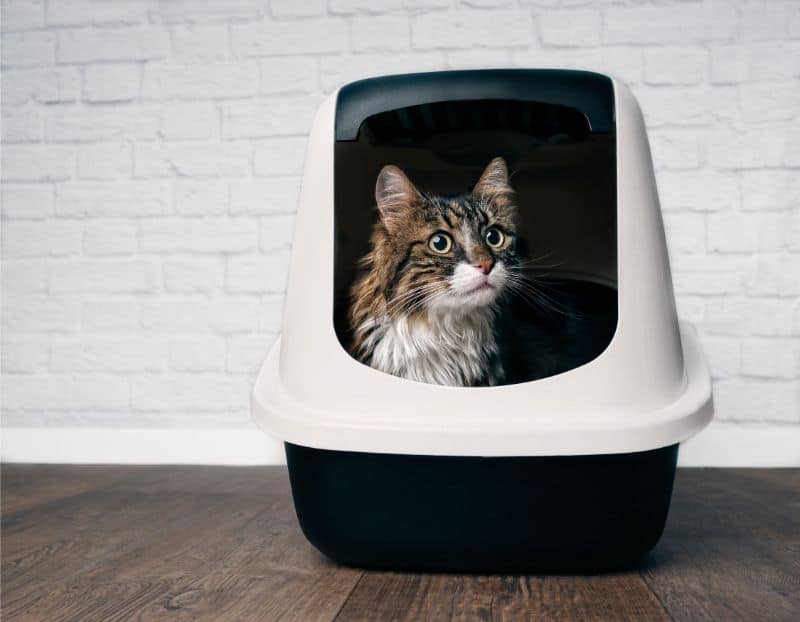Drawing a Line in the Sand: Solving Litter Box Problems

Not all cat owners enjoy scooping out the litter box, but this daily chore sure beats cleaning up messes made outside the box! Beyond the associated frustration, it can be maddening to get to the bottom of litter box problems. Why does this behavior seem to pop up overnight, and what can be done to encourage litter box frequency?
Patience and diligence are the keys to helping an affected feline turn things around.
Inappropriate, Inconvenient
Some pets take to house training like nobody’s business, others may have challenges and ultimately reverse course. Getting to the bottom of this mystery can take time, but a wellness visit complete with physical exam and diagnostics can rule out underlying illnesses that often cause spraying or incontinence. If it’s painful to urinate in the box, cats will begin to form negative associations that are hard to break.
Urinary tract infections or life-threatening blockages must be treated immediately. Once ruled out, we can focus on behavior patterns, habits and personal preferences.
Starting With the Basics
Supply one litter box per cat in the household, plus one more. If you have two cats you need 3 boxes. Preferably, there should be a box on each floor of the house, away from household traffic or noise.
Litter box issues can appear when boxes aren’t cleaned every day. Cats dislike eliminating in a box that smells bad or is full. Daily scooping is important for cleanliness and monitoring, and monthly dumping, bleaching, and re-filling with new litter is equally so.
Litter, and Litter Box Problems
Many cats are highly particular when it comes to the type, consistency, texture and smell of provided litter. Be careful to note whether your cat prefers clay, clumping, unscented, hard or soft litter.
They may like going in soft bedding, grass, newspaper, dirt, or smooth surfaces. Try to find substitutions that fit inside their box and encourage them to use it after meals.
Litter box problems can also occur when:
- The box doesn’t fit them. It may be the hood, the box’s depth, or not large enough to comfortably eliminate inside of. Many cats prefer high-walled boxes, others like hooded or fully enclosed boxes. Keep in mind that younger and senior cats may have mobility issues and may begin spraying because they can’t find or get into their box easily.
- They don’t like the location. Find another spot that is less exposed, one that’s not adjacent to a noisy appliance or doorway.
- Changes in household dynamics can be very stressful for cats. The adoption of a dog, another cat, new roommate, a move, etc, can really gum up their systems and they can quickly develop litter box problems. Try installing Feliway diffusers around the litter box.
Other Plans
If your cat is eliminating in certain areas, try placing a box there for them to use. Once they use it, gradually move it back to where it belongs. To divert your cat from going in a specific spot, place sticky tape there or an upside down office mat. Water or food bowls placed there can reduce spraying.
With an enzymatic product, clean areas where your cat has marked quickly and thoroughly. Cats will repeat spraying a spot that smells like themselves, so to limit this use ammonia-based household cleaners.
If you have further questions or concerns about litter box problems, Mobile Vet M.D. is always here for you!
